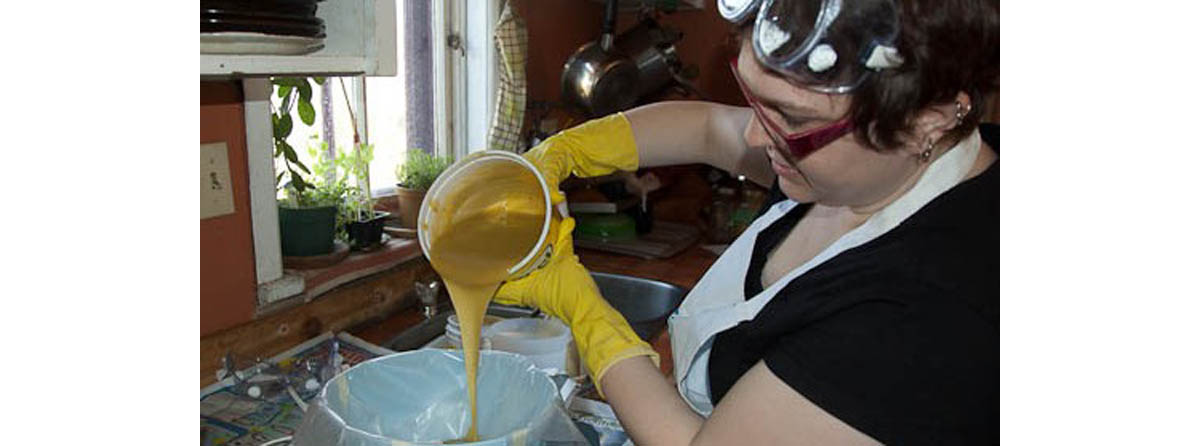Table of Contents
Making Soap
There are a few different ways of making soap, and some are more complicated than others. You can simply buy glycerine from a craft shop and add a few oils, coloring, and dried herbs, but this isn't very creative and the resulting soap isn't all that great (it gets slimy). Then you've got cold process soap, which uses lye and takes three to six weeks to harden before you can use it.

If you want your home-made soap with bug repellent ingredients to be ready very soon so you can start using it within a day, you'll need to opt for the so-called “hot process soap”. This method uses the chemical natrium hyrdoxide, also known as caustic soda, as well. It's just the same as the cold process, with the addition of oven or crockpot time for your soap to speed the hardening process up a lot.
This makes great soap, but you need to be careful. You can get really nasty burns if you don't protect yourself while making soap, and the stuff can damage your eyes for life. So, wear gloves and safety goggles at all times if you make your own soap, and keep your process away from other people. Keep a bottle of vinegar ready to counteract the effects of natrium hydroxide in the event that you do get it on your skin, as well as a phone in case you need to call 911.
Things you'll definitely need for soap making are:
-
Natrium hydroxide
-
Oils or fats
-
A saucepan
-
Excellent digital kitchen scales — your measurements need to be precise
-
An immersion mixer
-
A wooden spoon to stir
-
A mold to put the soap in
-
A kitchen thermometer
-
Gloves and safety goggles
You say how many oils you want to put in, and how much of each. Then, the calculator will tell you how much natrium hydroxide you need to use.
Soap making sounds scary, because of the natrium hydroxide, but it really isn't that hard. The key to success is following the steps precisely. Thankfully, you'll find all of those steps on crafty internet sites and blogs without any problem at all. Your measurements and temperatures need to be just right. Expect a few fails before you get the soap of your dreams.
The great thing about soap is that you can add dried herbs to the mixture (at the end of the process) as well as oils. Consider using cloves, dried basil, and chamomile flowers for instance.
Making Your Own Bug Repelling Cream
If you want to make your own cream, it is best to start off with a simple basic recipe that does not require the purchase of special products. For this simple starter recipe, you'll need two glass jars. For the first jar, you will need:
-
20 grams of water-free lanolin
-
12 grams yellow bees wax
-
35 grams coconut oil
-
35 grams soybean oil
Your second jar should be filled with 30 grams of rose water, orange water, or plain distilled water.
Place both jars in a saucepan filled with water, and heat them up slowly over a low heat until the water reaches 60 degrees Celsius or 140 degrees Fahrenheit. Make sure that the lanolin and bees wax are melted completely and you have mixed the ingredients in ja/r number one thoroughly.
Remove both jars from the pan, and then add the liquid jar to the other jar while stirring the mixture continuously until a homogeneous mass has been created and the mixture has cooled down to room temperature. At this same point, you can add the ingredients you would like, including eight to 16 drops of the insect-repelling essential oils listed in the first part of this article. You can add vitamin E for your skin or wheat germ oil for young-looking skin. And that's it! Enjoy your cream!
Only time and experience will tell you whether natural bug repelling products are as effective as commercial solutions. Is it worth it? That depends on the reactions you may have had to deal with from commercial products before, as well as the types of creepy crawlies you might encounter in your locale.
- Photo courtesy of da smart by Flickr : www.flickr.com/photos/smarta/6111318266/
- Photo courtesy of Steph by Flickr : www.flickr.com/photos/gwendy/5635790308/

